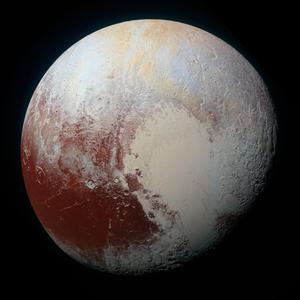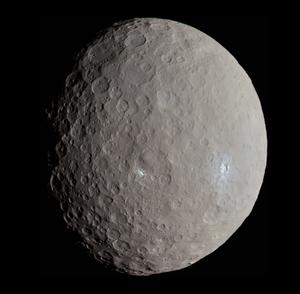Glossary term: Dwarf Planet
Description: A dwarf planet is a celestial body with the following properties: It orbits around the Sun, has enough mass to obtain a nearly round shape, has not cleared its path along its orbit, and is not a moon. Dwarf planets tend to orbit in regions made up of similar bodies, as in the case of the asteroid belt and Kuiper belt. In general, dwarf planets are smaller than Mercury, with icy, rocky structures. The amount of ice relative to the rocks depends on their position in the Solar System. Pluto is the most famous dwarf planet. The term dwarf planet should not be confused with the obsolete term minor planet.
Related Terms:
- Asteroid
- Asteroid Belt
- Kuiper Belt
- Minor Planet
- Pluto
- Trans-Neptunian Object
- Small Solar System Body
See this term in other languages
Term and definition status: This term and its definition have been approved by a research astronomer and a teacher
The OAE Multilingual Glossary is a project of the IAU Office of Astronomy for Education (OAE) in collaboration with the IAU Office of Astronomy Outreach (OAO). The terms and definitions were chosen, written and reviewed by a collective effort from the OAE, the OAE Centers and Nodes, the OAE National Astronomy Education Coordinators (NAECs) and other volunteers. You can find a full list of credits here. All glossary terms and their definitions are released under a Creative Commons CC BY-4.0 license and should be credited to "IAU OAE".
If you notice a factual error in this glossary definition then please get in touch.
Related Media
Pluto
Credit: NASA/Johns Hopkins University Applied Physics Laboratory/Southwest Research Institute credit link
License: PD Public Domain icons
Ceres
Credit: NASA / JPL-Caltech / UCLA / MPS / DLR / IDA / Justin Cowart
License: CC-BY-2.0 Creative Commons Attribution 2.0 Generic icons










